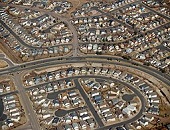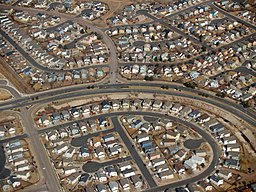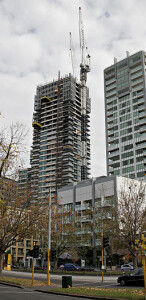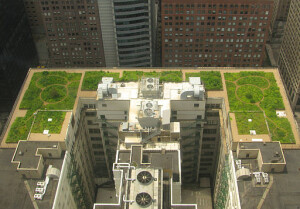How do we build our homes and cities for a sustainable future? Climate change is such a huge, complex problem that tackling it can seem overwhelming. Fortunately, many organizations are addressing various parts of this colossal puzzle. One aspect is the “built environment.” Can existing buildings be modified to cope with climate change? Can buildings be redesigned to have net zero effect on the environment?
On July 1, 2021, a panel of experts gave their thoughts on matters relating to climate change and buildings, as part of the New York Times Climate Hub series of webinars. This is the “Built Environment” segment of their virtual series.
“The pandemic has turbo-charged the debate around climate change,” said Mark Landler, London bureau chief of the New York Times, who acted as moderator for the discussion. “This shift is just a foretaste of the impact of climate change.” He suggested that financial institutions can accelerate the transition to zero-energy buildings (ZEBs).
“Over half of ‘building emissions’ come from simply building them,” said Nigel Topping. He has been appointed as High-Level Champion of United Kingdom for COP26, the United Nations Climate Change Conference that will be happening in October 2021.
Tokyo and several other cities have committed to net-zero building emissions by 2050. “If stakeholders do not take action now, we will affect generations to come,” Topping said. Vulnerable populations such as slum dwellers will be exposed to the worst of climate change.
Topping urged the change-makers to address historic inequalities as they tackle decarbonization. Building for a sustainable future is a “quadruple win,” leading to 1. Jobs 2. Climate action 3. Economic action and 4. Better health.
There is a lot of room for improvement, said Gillian Charlesworth, CEO of BRE Group. Of all the money spent on construction, there is only one dollar spent on “green” materials, compared to 57 dollars spent on traditional, non-sustainable materials. BRE Group is a prominent building science centre.
“There is more pressure from the investment community,” Charlesworth said, “due to the need to de-risk portfolios.” She suggested that governments should match the funds that companies are putting into ZEB projects.
“We need to speed up renovation to adapt buildings to net-zero,” said Pierre-Andre de Chalendar, Chairman and CEO of Saint-Gobain. “Technically, we know already how to do it.” Saint-Gobain is a multinational French company that produces a variety of construction, high-performance, and other materials.
He said there are two sides to the coin. “Materials we produce now are saving energy in the future. And the investor community is moving fast.”
“We need to make improvements to older buildings, and this will impact their communities,” said Margaret Chinwe Anadu, Global Head of Sustainability and Impact at Goldman Sachs. Financial institutions have little trouble making stakeholders know the value of transitioning to green. “Our stakeholders are bringing us along,” she said. “Our tenants want to be in LEED buildings.” LEED is the acronym for Leadership in Energy and Environmental Design.
Anadu said the efforts by members of her group are “data driven.” For example, they explored the racial wealth gap, and focused their efforts on narrowing the opportunity gap. In the same way, climate change initiatives will be data driven. Building materials and renovations must be right for the people and “that will drive down costs for families whose energy costs are too high.”
When it comes to climate change, “I expect to see the situation worsening unless we take action,” said Henrietta Elizabeth Thomson, Ambassador on Climate Change. She gave headline examples of the impact on people’s lives. She described the upheaval happening when the entire population of Barbuda was evacuated following Hurricane Irma was. Another example was Dominica, which experienced a terrible storm that destroyed 95 percent of the housing. “They lost 25 percent of their GDP overnight.”
“We have to think about how climate change affects lives and incomes,” Thomson said. “There will be an increase in severe events and adverse impacts. To frame it in a policy context, we need to work on both mitigation and adaptation.”
Landler asked for an example of new policies being pursued, which could serve as an example to other jurisdictions.
“In Barbados, there is the Roof to Reefs Program,” Thomson said. “This is an integrated policy to deal with a few issues at once: 1. Upgrading building codes, 2. Requiring all properties to have insurance up to category 4 hurricanes, 3. Addressing utility companies’ issues by ensuring all wires are put underground.”
One step at a time, one ZEB at a time, with cooperation between industry sectors, we will reach the net-zero emissions goals for the built environment. ♠️
Note added July 15, 2021: Click here to listen to a related podcast, Why Net Zero Doesn’t Always Mean Net Zero. Hear from Prof. Sir Dieter Helm about the realities of reaching net zero. This is sponsored by GARP.
The photo of a suburban tract is used with permission from David Shankbone.
The photo of high-rise construction is from Fir0002/Flagstaffotos.
The photo of the Chicago City Hall Green Roof is from Wikipedia Commons.




